Edsel B. Ford
Condensed from several articles in 1989, by Edsel owner Ron Osborn
Drawings by Harry Bradley
I have prepared a short story on the life of Edsel Ford. As most of us know, Edsel died
in May, 1943, so it seemed fitting to honor the man on the 46th anniversary of his death,
who's car and club are named after him.
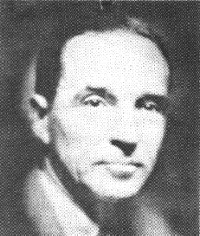 The story deals with his youth, his fascination with car design and development, his
Presidency of Ford Motor Company and his untimely death at age 49. Let me say that
finding articles on Edsel Ford was no easy task. Edsel lived in the shadow of his father
so much that very little is known about him even today. Even as President of Ford, he
made very few major decisions. It was usually Henry that made the final decisions for
the Company. However, Edsel enjoyed cars; especially car design. It was his hobby
as well as his specialty. Edsel had other hobbies, like photography, fast boats, painting
and sports, but cars remained his lifelong favorite.
The story deals with his youth, his fascination with car design and development, his
Presidency of Ford Motor Company and his untimely death at age 49. Let me say that
finding articles on Edsel Ford was no easy task. Edsel lived in the shadow of his father
so much that very little is known about him even today. Even as President of Ford, he
made very few major decisions. It was usually Henry that made the final decisions for
the Company. However, Edsel enjoyed cars; especially car design. It was his hobby
as well as his specialty. Edsel had other hobbies, like photography, fast boats, painting
and sports, but cars remained his lifelong favorite.
During his early childhood, Edsel and his father worked side by side on cars. Later on,
Edsel became more fascinated by the shapes of automobiles than by their inner
workings. As ateenager, he built several speedsters, mostly T-based. Edsel was
indulging in a common pastime of the day, one shared by quite a few young men with money, the
difference being that Edsel had an unlimited supply of parts. This love of styling and
building cars would come in very handy as time went on.
I found a statement by Edsel which was dated in 1922 - "Father makes the most popular car
in the world. I would like to make the best car in the world - Lincoln". In the
late '20's, it was Edsel who guided the styling of the Model A, and gave it the mini-Lincoln
look. At the time Henry was too busy straightening out the innards to worry about the
A's outlines. He didn't care what the car looked like as long as it did what he wanted
it to do, and it was painted black (REMEMBER?).
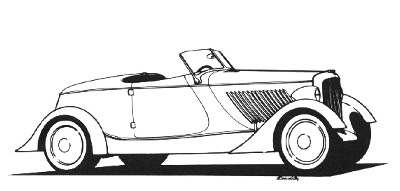
Edsel regularly had cars built for his personal use. Two of his personal favorites were
his 1932 and 1934 speedsters. The 1932 was a V-8 Boat-tail speedster, and was built with
the help of stylist-designer E.T. Gregorie.
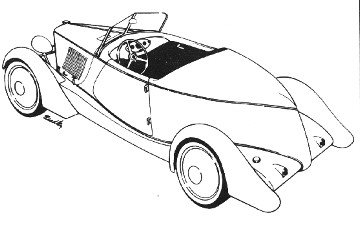
The '32 was a beautiful car with quite a number of radical features for its time. All
aluminum body, pantalooned fenders, bullet headlights, no running boards, split windshield and
V'd grille shell.
Two years later in 1934, Edsel again called on Gregorie to build him another
speedster. It again had an aluminum body, but this model was lower than the '32, and the
headlights were mounted at the axle height. There were twin-windscreens, no doors, and
the overall effect was that of a pure racing car. Edsel has no intention of producing
any of these cars in quantity, and for the most part he kept them out of his father's
sight. Seems Edsel kept his speedsters inside a gardener's shed at his home.
Edsel became the guiding light behind Ford's styling section, and as mentioned before, the
Lincoln became Edsel's crowning acheivement. But he also saw the Zephyr and most other
pre-war Fords through their various stages of body design. As one can see, these were
very happy times for Edsel. Unfortunately, there would be fewer of these happier times as
the pressures of running the Ford Motor Company, an over-demanding father, and America's
entry into the Second World War would begin to take its toll on Edsel.
After Edsel's death, both speedsters were sold.
(For the latest news on both vehicles, see the update at the end of this article.)
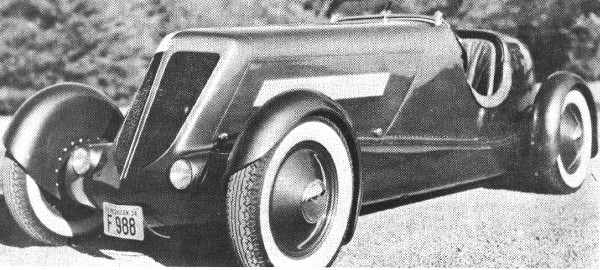
Edsel was twenty-five years of age when he became President of Ford, but the appointment
was no more than a cruel hoax. Foxy old Henry had redesigned the Presidency and was
making noises about organizing a rival firm to build a better and cheaper car than the Model
"T". Henry had no intention of relinquishing control of the Ford Motor Company, nor did
he plan to organize another company. He was simply diluting and very effectively the
value of Ford's stock, preparing to buy out the small minority stockholders and assume total
control. Edsel was being manipulated, and he would be manipulated, harassed, tormented
and humiliated all the remaining days of his life.
Once, when all the Ford brass, including Henry, were attending a luncheon, Henry rose
from the table and yelled at Edsel to "shut up", and stormed out of the room. Apparently
Henry had overheard Edsel remarking that there was some merit in placing hydraulic
braking systems on all Ford products, which were being done on virtually all of Ford's
competitors. It didn't pay to criticize Ford cars - not in Henry's presence at least -
and this included Edsel. One side note on the subject; Edsel's brother-in-law and
closest confidant, Ernest Kanzler, had learned that in 1926. Kanzler, a second Vice
President at Ford, composed a six-page letter in January of that year, pointing out that
Chevrolet sales were rapidly gaining, while Ford's were in sharp decline. Kanzler, while
delicately refraining from direct criticism of Henry's beloved Model "T", called for a more
competitive six cylinder car. "With every additional car our competitors sell, they get
stronger and we get weaker."
It backfired, and Henry was furious. Thereafter, Ernest Kanzler found himself ignored,
ridiculed, and victimized in every conceivable way. Ultimately, while Edsel was out of
the country, Henry had Kanzler fired.
On one occasion, Edsel had contracted for the construction of a new office building. It
seems both Accounting and especially the Sales department had long since outgrown
their quarters. Henry was out of town at the time that the plans were made and the
contracts let. (One suspects that this may not have been coincidental!) Upon
his return, the elder Ford took note of the excavation that was underway and demanded to know
what was going on. Edsel, doubtless with a mixture of pride and dread, described the
new building which would supply Company with badly needed office space. Henry wanted to
know for whom? This should have been Edsel's cue to pitch for the needs of the Sales
department - something Henry could understand. Instead, however, the younger Ford
mentioned first the accountants. Without waiting to hear another word, Henry turned and
marched out of Edsel's office.
The next morning, when the accountants reported for work, they found their offices
stripped. No desks, chairs, files or telephones. Even the carpeting was gone, and
they were out of a job. Henry had abolished the Accounting department with which
he had never had any patience with anyway, and overnight had seen to the removal
of its furniture and equipment. He then informed Edsel that there was now plenty of
room for the Sales staff.
People wondered then, and still wonder, why Edsel put up with such treatment. A
few reasons I found were:
- Some said it was out of love for his father.
- Edsel had three sons. Perhaps he was simply hanging on until the day that
they could take over.
- Doubtless there was the factor of family loyalty. For Edsel to have left the
Company would almost certainly have depressed the value of Ford stock, all of which
was held by family members.
- Others, more cynical, pointed out that Edsel derived a very handsome income
from the Ford Motor Company.
- Most importantly, from all the evidence, Edsel Ford was simply not a combative
individual. Confrontation and conflict were totally foreign to his nature.
In ant event, Edsel mostly kept his torment to himself. Only rarely did he reveal his
inner emotions to anyone - some perhaps to his wife Eleanor, and to Ernest Kanzler
before he was fired by Henry.
Frustration and suppressed rage make a poor recipe for good health and long life. Not
surprisingly, Edsel fell victim to ulcers. In time, the ulcers led to something far
worse. Early in 1942, he underwent abdominal surgery. Ten months later, he was
hospitalized again, this time for something called Undulant Fever. (My medical book
describes this as a persistent form of Brucellosis transmitted to humans from lower
domestic animals, or by their by-products, and characterized by a recurrent fever,
sweating and pain in the joints). As part of a bland diet, Edsel had been drinking
milk from his father's dairy, and of course old Henry would not permit the testing of
his herd, much less the pasteurization of the milk. But the doctors found something
far worse than undulant fever, as bad as that was. Edsel's ulcers had become
cancerous, and his condition was deemed inoperable. He was sent home to die.
Henry Ford refused to admit the truth about his son's condition. "It was all due to
Edsel's high flying lifestyle", he said. "If Edsel would stop smoking or eat a proper
diet, or go see other doctors, his health would improve". But early in the morning of
May 26th, 1943, death came for Edsel Ford. As I mentioned earlier, he was only
49. This story might have had a different ending if Edsel had been able to stand up to
his stubborn father, demanding that he be allowed to run the Company without
interference. But Edsel was Edsel, putting the feelings of others before his own.
Edsel did make an impact during his short life, though:
- On his community. For years Edsel Ford was one of the largest
donors to the Detroit Community Fund.
- On the Arts. A talented landscape artist in his own right, Edsel served for many
years as President of the Detroit Arts Commission.
- On the product line. It was Edsel who influenced his father to take over the
bankrupt Lincoln Motor Company, saving one great car from the fate of so many others
during the '30's.
- On his family. Edsel was the kind of parent who always was there, sharing
the joys and problems of his children. Edsel's final irony was the fact that the car that
was intended by his family to do him honor turned out to be a dismal flop. And, yes, on
his father. In the end, it was Edsel who persuaded the old man to replace the Model "T",
to mechanize his windshield wipers, to adopt - finally - hydraulic brakes, to engage in
some semblence of long range planning and to make peace with organized labor.
One has to wonder whether Henry Ford ever comprehended what he had done to his
only son. It seems unlikely. Certainly he never even began to understand this
complex gifted man, nor did he ever really try. Nevertheless, he was grief stricken
at Edsel's death. Less than four years after Edsel's death, the old man himself was gone.
In conclusion, I think a statement made in 1970 by Mr Henry Edmunds, Director of
the Ford Archives, pretty well sums things up when he said:
"Edsel was responsible for many good things in the Company's history - insistance on
verve and dash in product styling, on a reliable and safer product, on fair and courteous
relationships with dealers and the public. He posessed an unquenchable sense of fitness,
an insistance on doing the right thing. A single instance amoung many would be his
little-known acheivement in making Ford Overseas a strong segment in the Ford
marketing empire. He did all the essential things that Henry refused to do, and
consequently held the Company together during several crisis periods in the 1930's.
In true retrospect, he seems less a tragic figure than popularly supposed. Without him,
the Company might never have attained the solid image it was today."
HAPPY EDSELLING!!!
UPDATES
Edsel Ford's 1932 roadster was photographed by Brian Ritzow at the Grand National Roadster
Show in Pomona, California in February 2007. He writes, "During the show I got to know
the couple that just recently became the owners of this car. They apparently discovered
this through a friend as it was about to be junked."
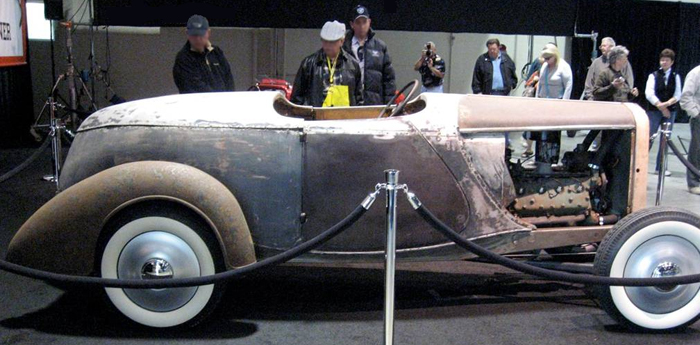
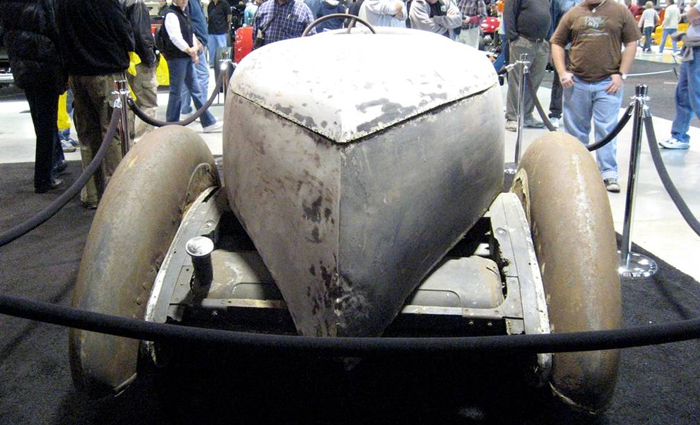
Edsel's 1934 speedster was sold in Atlanta, Georgia for $1000 after Edsel Ford's
death. It was next seen for sale in Road & Track magazine in 1948 for $2500,
but did not find a buyer. It remained in storage until 1958, when it was purchased by
John Pallasch of Deland, Florida for a tidy $603.
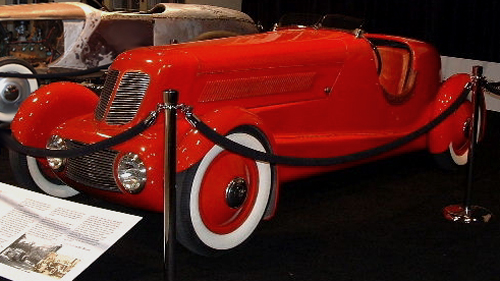
Under John's care, the car's gunmetal gray
exterior was painted red and the upholstery was replaced with matching red leather. As
of 1970, the car was reported belonging to Earl Pallasch of Deland, Florida. It was
spotted in Amelia Island, Florida in January 1999, having been purchased by Bill Warner,
founder of the Amelia Island Concours. On March 8, 2008, the car changed hands again,
selling at an RM Auction for $1.74 million.
 The story deals with his youth, his fascination with car design and development, his
Presidency of Ford Motor Company and his untimely death at age 49. Let me say that
finding articles on Edsel Ford was no easy task. Edsel lived in the shadow of his father
so much that very little is known about him even today. Even as President of Ford, he
made very few major decisions. It was usually Henry that made the final decisions for
the Company. However, Edsel enjoyed cars; especially car design. It was his hobby
as well as his specialty. Edsel had other hobbies, like photography, fast boats, painting
and sports, but cars remained his lifelong favorite.
The story deals with his youth, his fascination with car design and development, his
Presidency of Ford Motor Company and his untimely death at age 49. Let me say that
finding articles on Edsel Ford was no easy task. Edsel lived in the shadow of his father
so much that very little is known about him even today. Even as President of Ford, he
made very few major decisions. It was usually Henry that made the final decisions for
the Company. However, Edsel enjoyed cars; especially car design. It was his hobby
as well as his specialty. Edsel had other hobbies, like photography, fast boats, painting
and sports, but cars remained his lifelong favorite.





